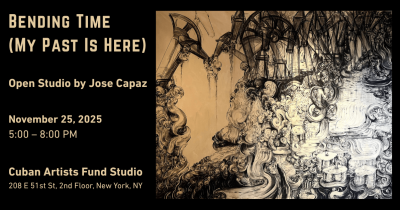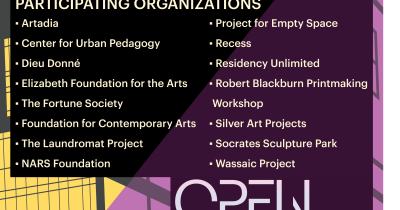Opening: October 11, 2025 | 11 am – 5 pm
On view: October 11-12, 18-19 & 25-26 | 11 am – 5 pm
Weekday visits by appointment (email info@residencyunlimited.org)
Location: RU House at Colonels Row, Building #404B on Governors Island (map)
Ferry information | Video directions
Please join us for our final group exhibition of the 2025 season at the RU House on Governors Island, featuring works by RU resident artists: Virginia Ariu, Aleksandar Ostojić in collaboration with Aleksandra Aranitović, Amela Rasi, and Gerta Xhaferaj. [In]Convenient [Short]Cuts is curated by Data Chigholashvili, Curator of Residency Unlimited.
Traces created by someone and those appearing by the passing of time, images and ideas that feel familiar yet eerie at the same time, reticulations emerging while searching for convenience, solution, or the way out – the artists in the exhibition approach some of these topics differently, while following various paths and cuts. The exhibition features works that deal with issues such as barriers and comfort, and visitors also encounter artworks that oscillate between personal and collective perspectives, critically engaging with specific locations, moments, and archives. In doing so, they all propose thinking about human agency, its traces, consequences, contradictions or the ways to address them. The artworks suggest reflecting on decisions that might be convenient for some but significantly affect the lives of others. Hence, they often glitch, could be short-run, create hurdles that don’t need to be there, and the cyclicality of finding solutions emerges. As each work juxtaposes unexpected fragments, stories, and/or forms of expression – in the context of this group exhibition – they also create a cut-up in a former residential house on an island, proposing new encounters and routes.
Amela Rasi often cuts up her paintings and then combines them as collages of different canvases. While various fragments in finished pieces can have a seemingly harmonious flow, one also finds the traces of painstakingly putting them together. Reflecting on the notions of displacement and shelter, as well as dangerous paths that many migrants are forced to take in search of better lives, in “Rescue Boat” she combines several rectangular pieces. However, these seams do not create a perfect grid, and connections sometimes become dead ends. The lines go towards a central point in another piece called “Forest Clearing” – referencing a natural occurrence, or one induced by human activity linked to various developments and environmental consequences. Together with a symbolic ceramic “Sun,” Rasi reflects on the fragility that accompanies concepts of comfort and home, and interventions in nature and the lives of others.
The consequences of extractivism are central to the work of Aleksandar Ostojić developed in collaboration with Aleksandra Aranitović. “Overburden / Scopertura” features a selection from a larger project about their hometown Pljevlja in Montenegro. The name of Pljevlja originates from chaff (in Montenegrin: pleva, pljeva), referencing previously agricultural landscapes that have changed to those of open-pit mines. The two images from private archives depict a striking change resulting from more than seventy years of lignite exploitation. They take a holistic approach, digging deeper into the layers of Pljevlja’s identity and the stories of its inhabitants, which are intertwined with those of the mine. For this reason, the installation also presents interviews with two former employees of the Pljevlja Coal Mine. The project points out the paradoxical state – shutting the mine down would result in economic collapse and dramatic changes for Pljevlja and its residents; however, it continues to have destructive effects on the population’s health, environment, and the town.
Making choices and having control over human actions takes a rather tragicomic turn in the work by Virginia Ariu. This exhibition features one painting from the series called “Holistic Jumps.” Known for their ability to jump, the frogs in these paintings are participating in a running competition, struggling to overcome hurdles placed one after another. However, as spectators are not sure why they are in this contest, one could also wonder what price they are competing for – is this a metaphor for a “rat race,” a never-ending, futile struggle for wealth and success, or for those unnecessary obstacles forced in life? With these anthropomorphic frogs, Ariu invites viewers to ponder topics such as agency and alienation, as well as how different roles and barriers can be imposed and perhaps, cut across.
The sounds of celebrations, holidays or just mundane moments can be heard in the house, as if somebody is rewatching a family video archive. “The Censorship of Flowers” includes videos, or rather altered videos, which Gerta Xhaferaj used to record as a child. The artist later discovered that to cover up the young videographer’s skills, her father would tape over segments with recordings of flowers and plants uncannily disrupting the footage. While exploring if her father was trying to “fix” family videos, imitate interstitial content of earlier broadcasting, or detach from hardships in post-communist transitional Albania, Xhaferaj also presents a glitching video – altered by time and herself – symbolizing how memories can fade, clash, or linger, and how taking action can address them.
Click above to see the images from the program
About
Virginia Ariu’s intersectional practice spans sculpture, photography, collage, painting, and readymades, drawing inspiration from personal explorations in literature, current events, art history, and beyond. These diverse influences often converge in immersive installation displays. Ariu’s solo exhibitions include Exercises of Abstraction, Sentiment, Zürich, CH (2025); Miart Art Fair, duo booth with Olivia Coeln, (with City Galerie Wien) Milan, IT (2025); What’s Got into Me, City Galerie Wien, Vienna, AT (2024); What Where / Was Wo, with Vittorio Santoro, Lighthaus, Zurich, CH (2024); End No. 1, Come Over Chez Malik’s, Hamburg, DE (2021); The Brink, Almanac Projects, Turin, IT (2020), Pierced, Forgo, Berlin, DE (2020); House Show, Brooklyn, New York, US (2019).
Aleksandar Ostojić is a visual artist exploring material transformation, space, and memory. His interdisciplinary practice merges installation, video, and sound. A key project, Extractivism of Memory (2024), examines resource exploitation and displacement. Using pulverized lignite dust from the Pljevlja coal mine, he creates a temporary landscape on the floor, evoking loss and conversion into energy elsewhere. The installation includes photographs, documentary video projections, and industrial soundscapes. Conceptually, it questions extraction as a phenomenon, linking resource depletion to cultural and artistic labor. Ostojić investigates how extraction shapes collective memory and local identity through material collection, spatial reorganization, and installation. His evolving practice creates a dialogue between material, space, and meaning, balancing permanence and transience. Aleksandar Ostojić is the recipient of the 2024 Milčik Award for young visual artists in Montenegro.
Amela Rasi explores human vulnerabilities, which are often revealed in unfiltered interpersonal interactions. Drawing from personal experiences, observations, and literature, she examines complexities like loss, narcissism, inner conflict, indecision, powerlessness, and loneliness within changing social contexts. Amela captures these insights through writing, poetry, and sketches, which inform her abstract canvas work. The figures she depicts, often circular, reflect emotion and human experience. In her future works, Amela plans to explore the impact of technology and “digital love” on human interactions, using materials such as fiberglass, clay, and stone to contrast the digital and human realms.
Gerta Xhaferaj lives and works as an artist between Albania and Switzerland. Employing both spontaneity and methodological rigour, her artistic focus lies in directly engaging with issues related to censorship and oppression, while seeking to extract intense aesthetic documentation from her experiences. Emphasizing and revealing the typically unseen, Xhaferaj’s approach includes a diverse range of media including photography, video, installation, and sound. Xhaferaj’s solo exhibitions include Holding with contribution of Sophia Eisenhut, Courtney Jaeger, Kunsttage Basel (2025), A Pause, a Rose, Something on Paper, Galeria e Bregdetit, Vlore, Albania (2024); Descent into Limbo, Galeria 17, Pristina, Kosovo (2023); 16’, Prostor, Croatia Culture Hub, Split (2023), 16’, Jelsa Art Biennial, Hvar Island (2023). Gerta Xhaferaj is the recipient of the 2024 Ardhje Award for young visual artists in Albania.
This program is supported by the Trust for Mutual Understanding.

RU is grateful for the partnership with Governors Island Arts.

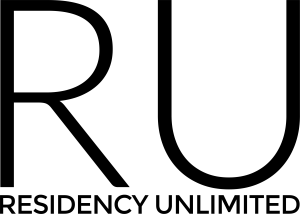
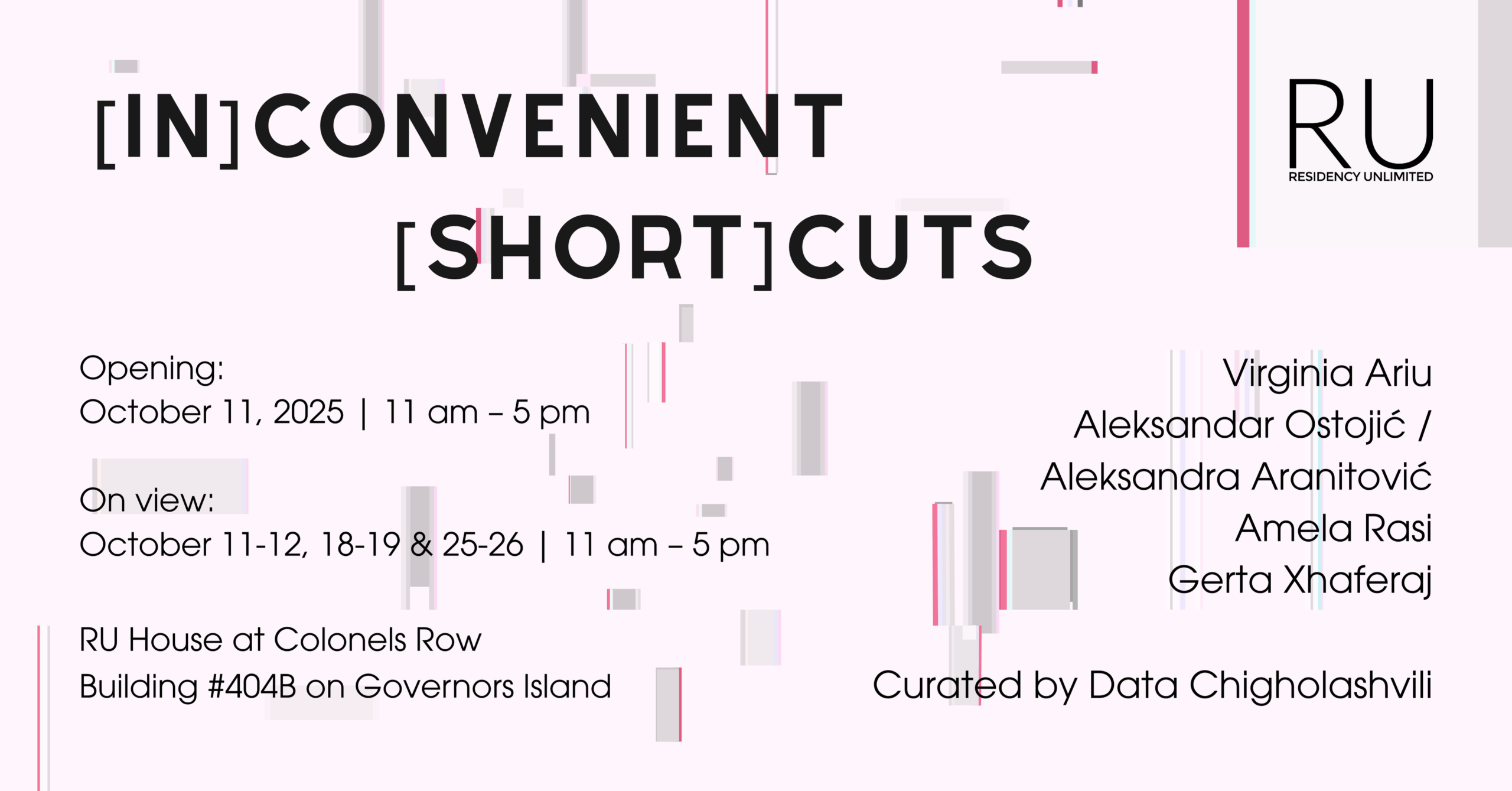
![[In]Convenient [Short]Cuts](https://live.staticflickr.com/65535/54852510780_8a8391dcc6_z.jpg)
